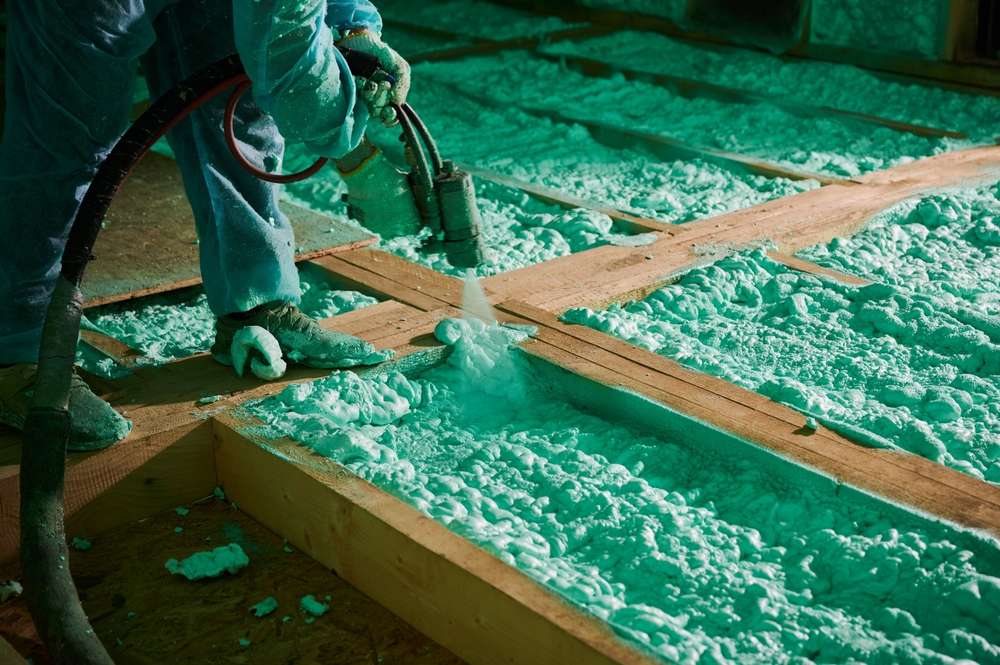Spray Foam Insulation: Complete Cost and Performance Guide
Spray foam insulation has become increasingly popular among homeowners seeking superior energy efficiency and long-term savings. This innovative insulation method creates an airtight seal that significantly outperforms traditional materials like fiberglass or cellulose. Understanding the costs, benefits, and considerations involved can help you make an informed decision for your home improvement project.

Why Spray Foam Insulation Stands Out
Spray foam insulation offers unique advantages that set it apart from conventional insulation methods. The material expands upon application, filling gaps and cracks that other insulation types often miss. This creates an exceptional air barrier, reducing energy loss by up to 50% compared to traditional insulation.
The superior R-value per inch means you get better thermal performance in less space. Open-cell spray foam typically provides R-3.5 to R-4 per inch, while closed-cell foam delivers R-6 to R-7 per inch. Additionally, closed-cell spray foam adds structural strength to walls and provides moisture resistance, making it ideal for basements and crawl spaces.
Typical Price Ranges
The cost of spray foam insulation varies significantly based on the type and application method. Open-cell spray foam typically ranges from $0.44 to $0.65 per board foot, while closed-cell foam costs between $1.00 to $1.50 per board foot. For whole-house applications, homeowners can expect to pay between $2,500 to $7,500 for open-cell foam and $5,000 to $15,000 for closed-cell foam.
Professional installation accounts for a significant portion of these costs, as the application requires specialized equipment and expertise. DIY kits are available for smaller projects, ranging from $300 to $600 for areas up to 600 square feet, though professional installation is recommended for optimal results.
Breakdown by Type Thickness & Area
Different applications require varying foam types and thicknesses to achieve optimal performance. Attic insulation typically uses 6 to 10 inches of open-cell foam or 3 to 5 inches of closed-cell foam. Wall cavities generally need 3 to 4 inches of open-cell or 2 to 3 inches of closed-cell foam to reach desired R-values.
Basement and crawl space applications benefit most from closed-cell foam due to its moisture resistance. These areas typically require 2 to 4 inches of thickness. Rim joists, a common air leakage point, need only 2 to 3 inches of closed-cell foam for effective sealing.
| Application Area | Foam Type | Thickness Needed | Cost per Sq Ft |
|---|---|---|---|
| Attic Space | Open-Cell | 6-10 inches | $1.50-$3.00 |
| Wall Cavities | Open-Cell | 3-4 inches | $1.00-$2.00 |
| Basement Walls | Closed-Cell | 2-4 inches | $2.00-$4.50 |
| Rim Joists | Closed-Cell | 2-3 inches | $1.50-$3.50 |
Prices, rates, or cost estimates mentioned in this article are based on the latest available information but may change over time. Independent research is advised before making financial decisions.
Efficiency vs. Cost: The Long-Term Payoff
While spray foam insulation requires a higher upfront investment, the long-term energy savings often justify the initial expense. Most homeowners see a 20% to 50% reduction in heating and cooling costs after installation. The payback period typically ranges from 5 to 10 years, depending on local energy costs and climate conditions.
The superior air sealing properties of spray foam also improve indoor air quality by reducing drafts and preventing moisture infiltration. This can lead to lower HVAC maintenance costs and extended equipment lifespan. In many cases, the improved comfort and consistent temperatures throughout the home provide additional value beyond pure energy savings.
Additional Costs & Safety Considerations
Several factors can increase the total project cost beyond the base material and installation fees. Site preparation, including moving stored items or protecting existing surfaces, may add $200 to $500 to your project. Areas requiring special ventilation or temporary occupant relocation during curing can increase costs further.
Safety considerations are crucial when installing spray foam insulation. Professional installers must use proper protective equipment, and occupants typically need to vacate the premises for 24 to 48 hours after application. Poor installation can lead to off-gassing issues or inadequate curing, emphasizing the importance of hiring certified contractors with proper training and equipment.
Some regions require building permits for extensive insulation work, adding $100 to $300 to project costs. Additionally, older homes may need electrical or plumbing modifications to accommodate the insulation, potentially increasing the overall investment.
Spray foam insulation represents a significant but worthwhile investment for most homeowners. The combination of superior thermal performance, air sealing capabilities, and long-term energy savings makes it an attractive option despite the higher upfront costs. By understanding the various factors affecting pricing and performance, you can make an informed decision that balances your budget with your home’s specific insulation needs.




